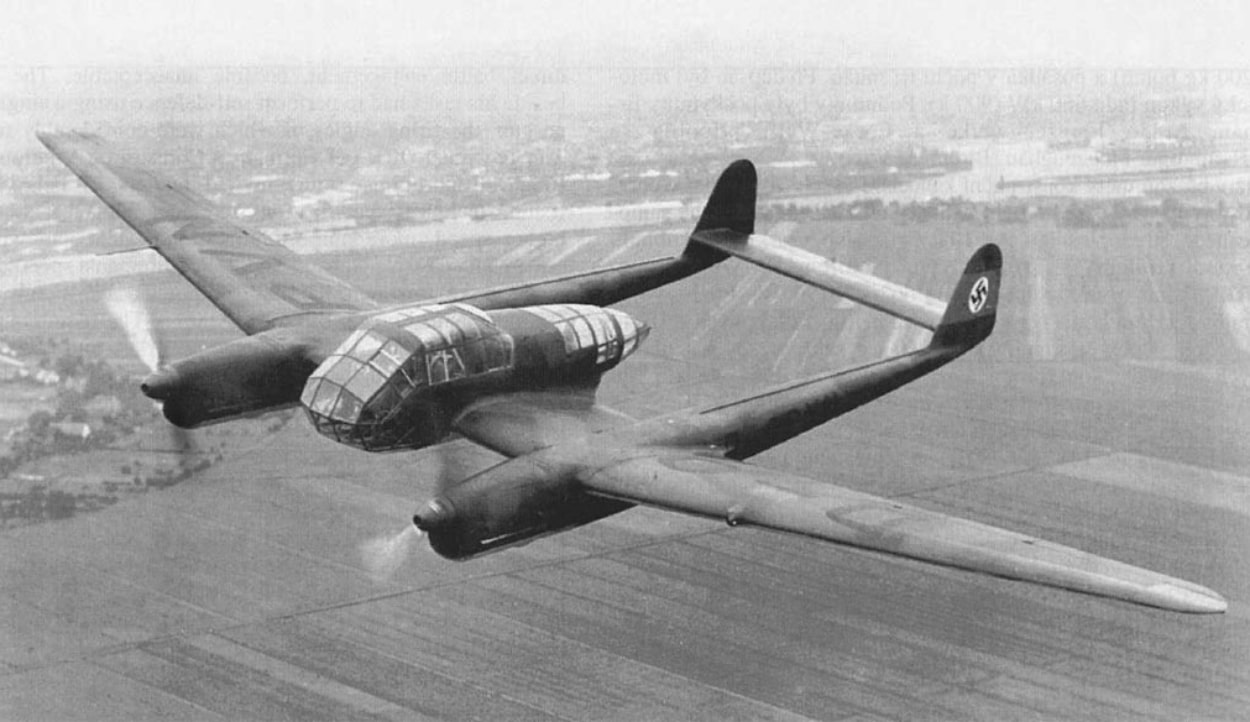Focke-Wulf Fw 189 (Reconnaissance aircraft)
Enlarge text Shrink text- Work cat.: 94171600: Punka, G. Focke-Wulf Fw 189 in action, 1993(Fliegende Auge, Flying Eye)
- Quick dict. weapons(Focke-Wulf Fw 189)
The Focke-Wulf Fw 189 Uhu (Owl) is a twin-engine twin-boom tactical reconnaissance and army cooperation aircraft designed and produced by the German aircraft manufacturer Focke-Wulf. It was one of the Luftwaffe's most prominent short range reconnaissance aircraft during the Second World War. The Fw 189 was developed during the late 1930s to fulfil a specification issued by the Reichsluftfahrtministerium (RLM) for an advanced short-range reconnaissance aircraft to succeed the Henschel Hs 126 in the tactical support role provided by the Luftwaffe to the Wehrmacht. While Arado Flugzeugwerke (Arado) had responded with the conventional Arado Ar 198, Focke-Wulf's design team, headed by the aeronautical engineer Kurt Tank, produced the unconventional Fw 189, a twin-boom aircraft with a central crew gondola with a glazed stepless cockpit. During July 1938, the first prototype performed its maiden flight; early testing of the Fw 189 demonstrated its superiority over the Ar 198, and thus the RLM backed its development and subsequent quantity production. During 1940, the Fw 189 entered service with the Luftwaffe. It was much in use on the Eastern Front against the Soviet Union, where it was used for reconnaissance role, a light bomber and a night fighter. The Fw 189 was also used on other fronts. Production of the type took place at the Focke-Wulf factory at Bremen, the Bordeaux-Merignac aircraft factory in occupied France, and the Aero Vodochody aircraft factory in Prague, occupied Czechoslovakia. Further development and production of the type continued until mid-1944, at which point production was terminated to concentrate on fighters.
Read more on Wikipedia >
 Topic
Topic




